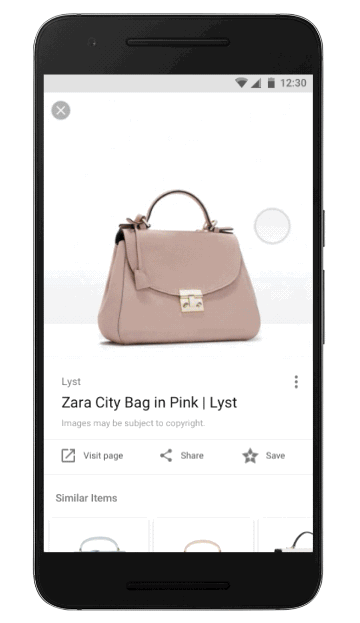Get Ready for Google Style Ideas

When it comes to digital channels that influence purchasing decisions, Pinterest is atop the list. In fact, 93 percent of Pinners have used Pinterest to plan for or make purchases and 52 percent have seen something on Pinterest and made a purchase online (source).
Part of its appeal is that Pinterest is image driven as buyers often don't know what they're searching for when they begin searching, and are simply looking for ideas and recommendations. It is helpful to shoppers in the exploration stage to see photos to connect products to their wants/needs. On Google, for instance, 40 percent of shopping searches are for broad category queries like "bedroom furniture" or "women's athletic clothing" with 90 percent of smartphone users not sure about the specific brand they want to buy when they begin buying (source).
Google is looking to tap into Pinterest's image search popularity by launching "Style Ideas" in the Google app for Android and mobile Web, which, writes Google, "will surface a grid of inspirational lifestyle images and outfits that showcase how the product can be worn in real life" - basically why shoppers turn to Pinterest.
 When using Style Ideas, users will also see an expanded carousel for "Similar Items," while searching for apparel products. Not only will Similar Items surface complementary apparel - like a handbag for an outfit - but will also display items at different price points.
When using Style Ideas, users will also see an expanded carousel for "Similar Items," while searching for apparel products. Not only will Similar Items surface complementary apparel - like a handbag for an outfit - but will also display items at different price points.
As/if Google Style Ideas grows in popularity, retailers will have to do their part to ensure they're optimizing their images so their products are discovered by mobile searchers.
"If they're not already, retailers should be migrating to cloud-based solutions for commerce and digital asset management," said Scott Webb, President of Avionos. "The cloud facilitates a multi-channel environment that enables a more seamless integration with machine learning technology, which is a primary component of Style Ideas and will play a large role in encouraging retailers to adopt this feature. Having a centralized process to manage these assets will be key to maximizing the asset value and reducing duplication. As Google continues to iterate on Style Ideas, the cloud will give retailers the freedom to implement those updates quickly across devices providing for a personalized retail experience that strengthens the impact of Style Ideas."
Getting in front of searchers is only half the battle, of course, when it comes to actually buying what appears in the surfaced images, retailers need to support the mobile checkout experience to ensure searches end in conversions, not bounces.
"Retailers can best support the mobile checkout experience by optimizing the process to be completed in as few clicks as possible," said Webb. "Providing shoppers with an intuitive and contextually relevant commerce experience can lower the rate of cart abandonment, which in time can build brand loyalty. Additionally, retailers can continue to collect customer feedback through the mobile checkout process and leverage that data to refine the offering based on consumer expectations."
Like any new feature making its way to the channels that consumers frequent, retailers have some concerns about Style Ideas particularly those that don't have a mature digital experience that is up to par with Google's.
"This new Style Ideas offering will likely increase pressure on retailers to rapidly adapt an integrated content and commerce strategy to meet consumer expectations for their digital experiences," said Webb. "This can be a seemingly overwhelming investment depending on level of digital readiness and budget, but a rapid and iterative approach to implementing this strategy can help manage costs and deployment releases.
"Powered by machine learning and visual experiences, Style Ideas enhances the purchase journey that gives a more customized offering. This can elicit concern in retailers as they struggle to create the same level of personalization in what they're doing."
Further, continues Webb, Google's move to launch Style Ideas is emblematic of a customer-centric approach that's been proven effective time and time again.
"As retailers take note of consumer preferences and what's working in the space, they're adapting their offerings to reflect that feedback," said Webb. "We've seen this iterative approach to user-experience with companies like Amazon, and now more retailers are recognizing its value in building customer loyalty and immediate ROI."








